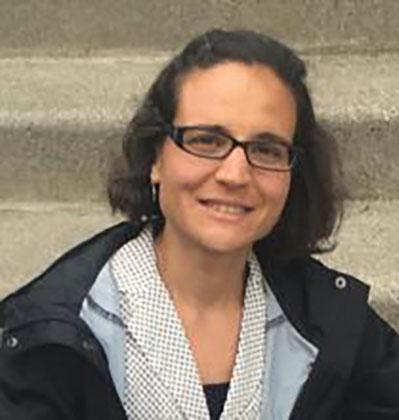Sarah Alaei, Ph.D.

About
Degrees
Current Research
Research in my lab focusses on understanding the biogenesis pathways and functions of Porphyromonas gingivalis surface structures. P. gingivalis is a bacterium known to play an important role in the initiation and pathogenesis of periodontal disease. Periodontal disease is one of the most common infectious diseases world -wide and in addition to damaging the gums and other tooth supporting tissues, it can result in chronic systemic inflammation that increases the risk of developing conditions such as cardiovascular disease, rheumatoid arthritis, pregnancy complications and type II diabetes. Given the prevalence of periodontal disease world-wide there is a need for effective therapeutics targeting the bacteria that initiate it. The long term goal of my work is to apply we learn about the biogenesis pathways and functions of P. gingivalis surface structures, such as fimbriae and outer membrane vesicles (OMVs), to the development of pathogen specific anti-infectives that combat periodontal disease without disrupting the beneficial microbes in our mouths.
The two major projects that are ongoing in my lab are:
1. Development of Fimbrial Assembly Inhibitors: Fimbriae are hair-like adhesive structures found on the surfaces of bacterial cells. They help the bacteria stick to other microbial cells, host cells and abiotic surfaces, thus playing an important role in the establishment of many infectious diseases. My previous work identified specific sequences in P. gingivalis fimbrial subunits that are involved in fimbrial assembly and then began to develop inhibitors that block the subunit-subunit interactions driving the fimbrial assembly process. Current work in my lab aims to increase the potency of these inhibitors. We are also working to identify additional proteins involved in fimbrial subunit trafficking and assembly that will serve as targets for future anti-infective development.
2. Studying the role of OMVs in biofilms: OMVs are membrane enclosed sacs containing cargoes such as proteins and nucleic acids. The majority of Gram-negative bacteria appear to make OMVs, but the mechanisms underlying their assembly and release remain to be elucidated. P. gingivalis produces an abundance of OMVs and these OMVs appear to be involved in regulating the composition of multicellular communities known as biofilms. Current efforts in my lab aim to understand the mechanism underlying this OMV mediated biofilm regulation. Additionally, we are using genetic tools to identify the signals and structural proteins that drive and regulate OMV biogenesis. A better understanding of P. gingivalis OMV biogenesis and function may lead to the identification of novel targets for future anti-infective development as well.